Seasons of Japan: The Good, the Lovely, and the Terribly Ugly
Letters from Japan, October 2025: When is the best time to visit Japan? (and what to wear - just kidding, or maybe not).
Good morning,
Autumn is in full swing here in Tokyo. We’re already deep into the merino sweater phase of the year, and I suspect that in a week’s time, those thin yet mighty Uniqlo winter coats (the nationwide uniform) will make their first seasonal debut.
As the weeks go by, new versions of those coats will surely appear, announced by Uniqlo with the kind of urgency that will once again make me feel I must buy one to stay alive, or at least to keep my visa intact. Yet they’ll all look so similar to the previous ones that telling them apart would attest not to one’s sense of fashion but rather to an engineering degree. Honestly, with names like BlockTech, HeatTech, Dry-Ex, Airism, and PuffTech, if it weren’t for the adorable colors and visuals, one could easily mistake Uniqlo’s product launches for those of a semiconductor company.
But despite the over-the-top jargon, it’s always encouraging to see Uniqlo’s webpage open with PuffTech, offering ultra-fine hollow synthetic fibers that trap air for lightweight warmth, quick-drying, washable, water-repellent, and anti-static performance for cool conditions, and replacing the Airism line and its comfort-conditioning, moisture-wicking, and miraculous capillary effect (otherwise known as the “if you need to wear this, you’d better stay indoors” technology). This shift, both on the webpage and on the colorful racks of Uniqlo, means summer is officially over, and we’re now as far from it, and all its misery, as we’ll ever be this year.
So, this particular time of the year is possibly the safest time to cover this month’s topic: the seasons of Japan and the eternal question of “when is the best time to visit?”- a question that, if asked during the summer, when in the throes of humidity-induced trauma and unable to imagine that better days would eventually come, would surely be met with a very firm “never.”
But now, with a sweater on, the air conditioner on heating mode, still dark outside at 4:30 a.m., and two cups of coffee in, I could perhaps not only over-romanticize Japan’s touristic allure but even find it in my heart to write one or two kind sentences in favor of Japanese summers.
So here we go: first, a few general remarks, followed by a season-by-season review, and, finally, a brief fake mea culpa section on over-tourism discussions in the context of Japan.
Where there’s a will, there’s a way
Two of the main drivers of international tourism in Japan are nature-related seasonal events: the fall colors, known as kōyō, and the cherry blossoms, the famous sakura. (So yes, brace yourself - this post will be full of truly shocking, never-before-heard revelations and secret tips like this.)
The sakura is a famously short-lived event, lasting only about a week at its peak, which I suppose is part of its appeal. Kōyō is a bit kinder in that respect, with a window of roughly three weeks in each location, during which the leaves' colors progress from green to yellow/orange and then red before turning brown and finally falling off the trees.
The Japan Meteorological Agency publishes an excellent fall colors forecast map each year, tracking the progress of autumn foliage at more than 700 locations across Japan throughout the season, along with a similar map for cherry blossoms in spring.
But since trips often need to be planned far in advance and the forecasts have a habit of changing (increasingly so in recent years), planning a trip around these natural events for a specific city can be a little anxiety-inducing.
There is, however, and fortunately, another “but” to all of this: if your main goal is to experience the kōyō or sakura and you’re flexible about where to go, Japan’s tall, narrow shape, dominated by mountains and stretching from 46°N in Hokkaido to 24°N in Okinawa, works in your favor, offering a remarkable range of seasonal contrasts, and a generous window of time to catch these seasonal events with a bit of moving around.
Fall colors begin in the peaks of Hokkaido as early as mid-September, then gradually move south through mountain ranges and northern cities, reaching the gardens and temples of Tokyo and Kyoto by late November. They then move to the southern regions such as Kyushu, before making their rather sad exit around mid-December. During this three-month stretch, you can either head higher into the mountains or travel from north to south to catch the colors at their peak.
Similarly, while you can encounter the cherry blossoms as early as mid-January in Okinawa, they won’t grace Hokkaido with their fleeting beauty until May, with Kyoto and Tokyo experiencing Japan’s most beloved natural spectacle from late March to early April. There are also early-blooming varieties, such as kawazu-sakura in the Izu Peninsula, that appear in February. In other words, from mid-January to mid-May, it will not be too hard to find somewhere in Japan to see for yourself whether those pink and white flowers live up to the hype.
So when it comes to kōyō and sakura, it’s a little bit of a “where there’s a will, there’s a way” situation.
This seasonal contrast, and the flexibility it brings, also makes it possible to design a trip that includes the usual suspects like Tokyo, Kyoto, or Kanazawa during their quieter shoulder seasons (mainly October, January, and February), while still leaving room for an awe-inducing, scenery-focused escape to a rural area, whether for kōyō, sakura, or Japan’s ever-spectacular snowy landscapes.
For instance, a late-October visit to Tokyo can be paired with a fall-colors getaway to Tohoku. Likewise, a relatively less expensive February stay in Kyoto can be complemented by a snowy onsen retreat in the easily accessible prefectures of Gifu or Nagano. This way, you can enjoy the main city destinations with fewer crowds while still getting to experience some version of iconic landscape scenery elsewhere.
The same logic tied to seasonal contrasts even applies to Japan’s otherwise dreadful summers: you may combine a hiking trip in Hokkaido (where breathing in summer still feels like a normal human function, unlike on the mainland) with a hot but undeniably beautiful beach stay in Okinawa, and you can skip the mainland altogether while still experiencing two of Japan’s most rewarding landscapes.
After this long introductory section, which the Japan National Tourism Organization would probably approve of, since it reads a little like a cheesy travel brochure titled Enjoy Japan: Anytime, Anywhere, let’s move on and take a closer look at the four seasons Japan is so famously proud of, even though it probably shouldn’t be (because one of those seasons really doesn’t deserve to be listed among the regular human-friendly ones).
Autumn: Who Does Not Love One
Except for Hokkaido, September is still essentially part of the summer season in Japan: beaches in Okinawa remain busy, while cities on the mainland stay grudgingly hostile to humankind.
But come October, the weather cools down substantially. The month, however, still falls under the typhoon season, which starts in May. So, if your plans include island destinations such as Okinawa or Yakushima, it is always good to have a backup plan, as transportation disruptions due to weather are not uncommon.
The impact of typhoons on mainland cities, while not nonexistent, is usually far less severe than on the smaller islands, making October an ideal time for walking-heavy urban adventures. It’s also, from an event-driven tourism perspective, one of the quieter months in Japan. There are no major holidays other than the Sports Day long weekend (on the second Monday of the month), so the hotel rates tend to be a little more reasonable across most destinations.
Early October (except in Hokkaido) is also still a good time for some mountain hiking before the snow takes over, and, with a little bit of traveling, you can even catch the fall colors in all their glory as they make their descent much earlier to some high altitude places like Karasawa1 in Kamikochi, the Tateyama Mountains, or Oku-Nikko2—three magnificent nature spots, each perfect for an overnight trip if you’re departing from Tokyo.
By early November, with the footsteps of autumn growing louder, things start to get a little busier. Around this time, carving out a few days in your itinerary for a Tohoku add-on will almost guarantee some fall color viewing without the need to hike up the mountains, as this is when the leaves reach their peak at easily accessible iconic spots like Oirase Stream in Aomori.
Late November marks a sharp turn toward the high season. The peak fall colors descend almost simultaneously on Tokyo, Kyoto, and Kanazawa. Accommodation bookings for this period require not only early attention but also noticeably higher budgets than in other seasons. Booking restaurants in advance is also highly recommended during this period (or, honestly, at any time of year), unless you want to wander from door to door in search of a seat in Japan’s adorably tiny restaurants while your blood sugar drops, taking with it your patience to appreciate the firm yet seamlessly polite rejection techniques of the Japanese.
Despite the understandable and expected madness (count me in, with two cameras hanging from my neck while also trying to shoot with my phone) that the fall colors bring, particularly to Kyoto, this is still a rewarding time to visit Japan. Experiencing those elegant temples embraced by the warmth of autumn colors, and witnessing one of Japan’s most defining qualities—how culture and nature so effortlessly blend and elevate each other—will likely still feel worth all the usual high-season troubles.
Winter: A Personal Favorite
Once the fall colors season is over by mid-December, the Christmas mood takes over the country. Yes, Japan is a Shinto-Buddhist country, and Christmas is therefore not a religious holiday, but rather an excellent excuse for yet another theme-driven celebration (just like Halloween and, I believe, even Easter) in this lovely land of theme-driven living.
I’m not from a country with a Christmas tradition, so I’m obviously not an authority on the topic. Still, while the second half of December sees the cities beautifully lit up, Jingle Bells coming out of almost every store, Christmas cakes unique to Japan decorating the patisseries, and the big tradition of eating KFC fried chicken around that time of year, I find it hard to feel the warmth of it all and look past its artificiality.
In all these past years in Japan, the closest I’ve come to genuinely feeling that heart-warming joy of December (a month I rather narcissistically adore for being born on the winter solstice) was when I stayed in Biei, Hokkaido, for a week last December - a picture-perfect small town that could easily serve as the set for one of those Hallmark Channel Christmas movies, yet somehow manages to feel “authentic” without crossing into Disneylandish territory.
Once Christmas is over, Japan turns back to its roots and embraces its own holiday, Shōgatsu - the Japanese New Year. The period that begins with eating soba on New Year’s Eve and continues through the first few days of January is a deeply traditional and family-centered holiday, marked by customs such as refraining from cooking using the fire not to disturb the gods and instead eat osechi ryori (which leads to a frantic few days of pre-preparation, with grocery stores staying open late, or buying one from the highly artful food sections of deparment stores like Daimaru), and hatsumōde - the year’s first shrine or temple visit, which draws enormous crowds at places like Sensō-ji in Asakusa in Tokyo.
During this time, most restaurants, museums, and even grocery stores remain closed. So if you happen to be in Japan on the first few days of January, it may be best to plan strategically and reserve a full-board onsen/ski resort stay for those days.
Once the holiday saga is over, the most bland, and therefore the most pressure-free period of the year begins: January and February.
During this time, there’s no natural event that “elevates” the urban scenery or gives you that senseless sense of joy I sometimes feel pressured to feel in the holiday season or the spring. There’s nothing but bare trees and your old standard black coffee at Starbucks, instead of a Merry Berry Strawberry Frappuccino or White Peach & Cherry Blossom Warabi Mochi Coffee. This is in its own way one of the most precious times of the year - all thanks to its uncompromising dullness.
The only thing that, scenery-wise, shakes things up a little during this period is the almost daily appearance of Mount Fuji for Tokyo residents, thanks to the clear skies and lack of humidity.
This uneventful period from January to late February is the prime shoulder season for Tokyo and Kyoto, which tend to be mostly sunny at this time of year, with the refreshing, and occasionally freezing (particularly in Kyoto), crispness of winter. Hotel rates are also noticeably reasonable during this time,3 more so than even in October.
Snow is, unfortunately, a rare occurrence in Tokyo, maybe once or twice a year, while Kyoto seems slightly luckier in that respect. But for a more reliable snowy urban adventure, Kanazawa remains the safer bet.
The blandness of the city landscapes during this season is balanced by gorgeous snowscapes in atmospheric onsen villages that you can easily access in Tohoku, Nagano, Gifu, Niigata - you name it - or, of course, in the country`s northernmost island, Hokkaido. This is also the period when ski towns like Niseko in Hokkaido, nowadays more infamous than famous, and Hakuba in Nagano enjoy their peak seasons.
So January to February is another good period to have a more relaxed shoulder season experience in Tokyo or Kyoto, while still having access to “wowww, I am so happy I could cry” kind of dramatic landscape scenery somewhere else.
Spring: The Tears of Joy
But you may want to save those tears of joy for spring, which (in case you did not know) comes up next with a seasonal transition that feels emotionally far more moving for the country as a whole.
While city folks like me can endlessly romanticize the poetic beauty of snow country (safe from the restrictive realities of heavy snowfall and brutal cold in Tokyo), the arrival of spring marks something more tangible for rural and mountainous areas of Japan: the promise of easier days outdoors and the beginning of the planting season.
In Japan, spring, maybe not weather-wise but certainly emotionally, arrives a little earlier than it does elsewhere, around late February, when the plum blossoms make their brief appearance. If you happen to be in Kyoto around that time, Kitano Tenmangū and Jonan-gu Shrine are two beautiful spots for viewing the plum blossom, a flower that one could easily mistake for sakura, and be entirely forgiven for it.
While the plum blossoms set the mood, spring in Japan reaches its absolute crescendo—the biggest crescendo of all crescendos—with the sakura bloom. An event that even the greatest skeptics would find it difficult to call overrated.
It honestly took me a while to truly grasp its importance and eventually give in to the contagious joy of the season, but sakura is an event whose significance goes far beyond the beauty of those tiny pink and white petals. Best celebrated with a lovingly assembled all-day (and often highly liquid) hanami picnic under the trees, it’s the perfect showcase for a culture whose most cherished and unifying traditions revolve around the celebration of nature. The sight of a family setting up their hanami picnic early in the morning—fully prepared to spend the entire day in the park, admiring a phenomenon they witness every year with a never-diminishing, explosive joy, always brings tears to my eyes (and also makes me miss my family and friends), even as I type this.
Sakura is, without a doubt, also the most challenging travel period of the year,4 as it’s an event that combines high international demand with equally strong domestic demand. Accommodation prices skyrocket, and this is when you get that shoulder-to-shoulder kind of crowded high-season experience, where people often have to walk in line through the streets and temple grounds.
I’ve, however, recently noticed one unexpected benefit of the sakura season: it eases the pressure on certain otherwise tourist-magnet landmarks, very popular places to visit, but ones that don’t have any cherry trees. They’re usually entirely ignored during this period, unable to compete with the flamboyant energy of those pink blossoms. When I visited Kyoto last year during peak bloom, I was shocked to see how empty Enkō-ji Temple was — and, to some extent, even Arashiyama’s Bamboo Forest, the otherwise global poster child for overtourism.
Once the sakura season is over, there’s a brief window combining the good weather with slightly thinner crowds before Japan’s biggest annual week-long holiday starts in early May: Golden Week (a cluster of public holidays including Showa Day, Constitution Memorial Day, Greenery Day, and Children’s Day). This is the country’s busiest domestic travel period, when hotel rates reach near sakura level and advance seat reservations for the Shinkansen become mandatory.
In previous years, I either stayed home in Tokyo (after once making the mistake of taking my mom to Ishigaki in Okinawa during her first trip shortly after I moved to Japan, underestimating the severity of the region’s rainy season) or traveled abroad during that time. But last year, I bit the bullet and took a trip within Japan, covering the southern coast of Shikoku on foot and the Shimanami Kaido on bike. And while hotel bookings were indeed a challenge (I had to change hotels in the same town several times), the walking routes were completely empty, and there was no “bike” related congestion along the Shimanami Kaido. So, if you happen to be in Japan during Golden Week or any other busy season, it’s good to keep in mind that there are many regions in Japan that are perpetually in the shoulder season - places that, unfortunately, despite the government’s efforts, receive only a fraction of the visitors that the famous “Golden Route” or “New Golden Route” attract and where you can always have some version of a secluded travel experience.
The Golden Week holiday also marks one of the last opportunities for travel within the country before Japan forgets that it’s generally considered to be a habitable place, home to 120 million people, and should probably behave as such.
Summer: You Have Been Warned
I don't think this next statement will come as a surprise to anyone, as I somehow manage to find an excuse to complain about summers in Japan in every single monthly letter: visiting Japan in summer is generally considered not to be a good idea, if not a fatally risky one.
First comes the rainy season, which begins in early May in Okinawa, later in the month in Kyushu, and in mid-June in places like Kyoto and Tokyo. While the season, nowhere near as atmospheric as the monsoon season of Southeast Asia, where you are sure to be blessed with magnificent rainbows after each downpour, had been considerably short in recent years (supposed to last for about four to five weeks), its ending signifies something even less pleasant than the non-atmospheric and continuous rain of the most dready kind: the actual summer in Japan, which, I’m sure most people would agree, deserves a new term, if only to avoid giving a bad reputation to summers elsewhere.
While most people are, understandably, inclined to underestimate its brutality (thanks to the deadly combination of heat and humidity), since summer is one of the rare times of year when people can take long vacations, I can assure you it’s far worse than you probably imagine.
But if you choose to travel to Japan in summer (or have no other option), you might have an easier time if you do your sightseeing between 11 p.m. and 3 a.m. (it is a very safe country, after all), since the sun rises as early as 4 a.m., eager to maximize its time above us to test the physical endurance limits of humankind. Apologies for the clumsy attempt at sarcasm, but I genuinely can’t bring myself to offer any practical advice for coping with Japan’s summer humidity. Some people move out of the country entirely to avoid those excruciating four months, a choice not hard to relate to, despite all my love for Japan.
On the alternative, no sarcasm here, you may consider the option to travel either to the northernmost part of the country, Hokkaido, home to magnificent hiking trails and some of the most picturesque small islands in Japan, offering a bit of a break from the humidity; or to the southernmost part, Okinawa, where there’s no escape from the humidity but otherworldly waters that more than make up for that otherwise unforgivable sin.
While the exact dates vary, the second week of August is typically when Obon is celebrated in Japan, commemorating one's ancestors, making it another busy week for domestic travel.
In summary, summer in Japan is as bad as they say, and even worse, but it’s also one of the best times to visit two of the country’s most beautiful islands: Hokkaido and Okinawa (this was the sentence where I fulfilled the promise I made in the recital: to write one nice sentence about Japanese summers).
The Blame Game: Overtourism in Japan
To take the tone of this letter to even more depressive grounds after the summer section, here comes a little fake mea culpa before we wrap things up:
Despite my newsletter being about travel in Japan, and Japan, with its ever-growing visitor numbers and the interest concentrated in just a few locations, often being at the center of discussions on the perpetually hot topic of overtourism, I’ve never really touched on the subject, not even in this post, which focuses on Japan’s travel seasons and would be the perfect place for that discussion.
That’s mainly because I genuinely don’t know what I could add to the conversation. I don’t have the technical expertise that environmentalists, city planners, tourism professionals, or economists do. My only direct relationship to the issue is as a traveler, but then, so is everyone else’s. And I don’t want to write about it from a non-technical angle, since those pieces often end up sounding like behavioral lectures and put the writer, possibly unintentionally, in a somewhat preachy position.
I also feel that a good portion of overtourism-related discussions about Japan are, unfortunately, driven more by ego, to glorify one’s own travel experiences, to reminisce about time in Japan “before all the visitors ruined it,” with an extra touch of gatekeeping, than by genuine concern for the country. These days, I come across more posts about how people think others should travel than about the author’s own experience of Japan. The tone around the topic has become so divisive that one might think most people travel with a single mission in mind: not to see the sights, not to feel the excitement of being in a new place, but to disturb the peace and the socio-economic balance of their destination. The blame game is that strong.
I’m, for better or worse, not that pessimistic. Or perhaps this is simply my lazy way out of the debate, as I don’t have the heart to criticize an act like traveling, something that has brought me so much happiness and given such meaning to my life, unless there is an obvious malicious intent.
I also believe that while we may inspire one another to explore new destinations and experiences, travel ultimately remains one of the most personal and subjective experiences there is, and that’s the beauty of it. We all relate to it differently, in ways shaped by our past experiences and expectations. And, of course, we all have different levels of resources, which ultimately influence how we access, experience, and consume travel.
So maybe my love for the act of traveling makes me a little blind to its negative impact, and gives me a naive approach to the topic in the sense that I believe its benefits far outweigh its downsides. However, unless I can offer a more technical and therefore slightly more useful perspective on the issue,5 I hesitate to write about the topic, particularly from a behavioral perspective, as I probably have a few skeletons in my own closet as well.
So, this wraps up this month’s letter, one that, in retrospect, probably should have started with winter and ended in autumn, rather than with the mood-killer summer section followed by the over-tourism discussion. But brighter days are ahead.
The next post will come in early November under the Travel Diaries section for monthly and annual subscribers, covering an upcoming Tohoku Onsen Hopping trip, during which I’ll stay at four different rustic (maybe even a little too rustic) onsen in Aomori and Akita Prefectures. That will be followed by the usual monthly edition in late November.
As always, thank you for being here and for your interest in this newsletter. I don’t take the good fortune of finding an audience for something as seemingly trivial as traveling in Japan lightly, and I don’t hesitate to express my gratitude repeatedly, even at the risk of sounding overly sentimental.
Thank you, and until next time,
Burcu
P.S. In addition to the monthly letters, below is a quick recap of the extra itinerary and planning-focused posts available on the newsletter for monthly and annual subscribers. You can access each one here on Substack or on a single page on my website.
Tokyo Eateries: the Non-Gourmet Version (October 2025)
Autumn Colors Trip to Aomori: Itinerary Suggestion (August 2025)
One Fine Day in Kanazawa (July 2025)
Cycling the Shimanami Kaido in Two Days (June 2025)
Japan Trip Planning Q&A Series (three posts) (February - April 2025)
Winter Trip to Biei in Hokkaido (four posts) (January 2025)
Hiking the Kyoto Trail (five posts) (November 2024)
One Fine Autumn Day in Kyoto (October 2024)
Okinawa Diaries: Tokashiki Island (two posts) (September 2024)
Walking Goto Islands (eight posts) (March 2024)
The best time to see peak fall colors in Karasawa is usually late September or early October.
I just visited Oku-Nikko last Sunday (October 19th). It was cold and overcast, yet deliciously colorful and foggy. This post on the website is due for a major update, which I’ll get to soon: https://bizarrejourneys.com/nikko-fall-colors/
We recently booked the same Kyoto hotel for a February stay at half the price friends paid last November during the peak fall-color season.
As it was noted by a fellow Substack writer in the comments, “spring trip may also be challenging for those with a pine/fir tree pollen allergy problem, who should either come well prepared or avoid it altogether.”
As a lawyer, studying the comparative overview of legislative approaches in various countries to address the impact of over-tourism may be a good starting point.


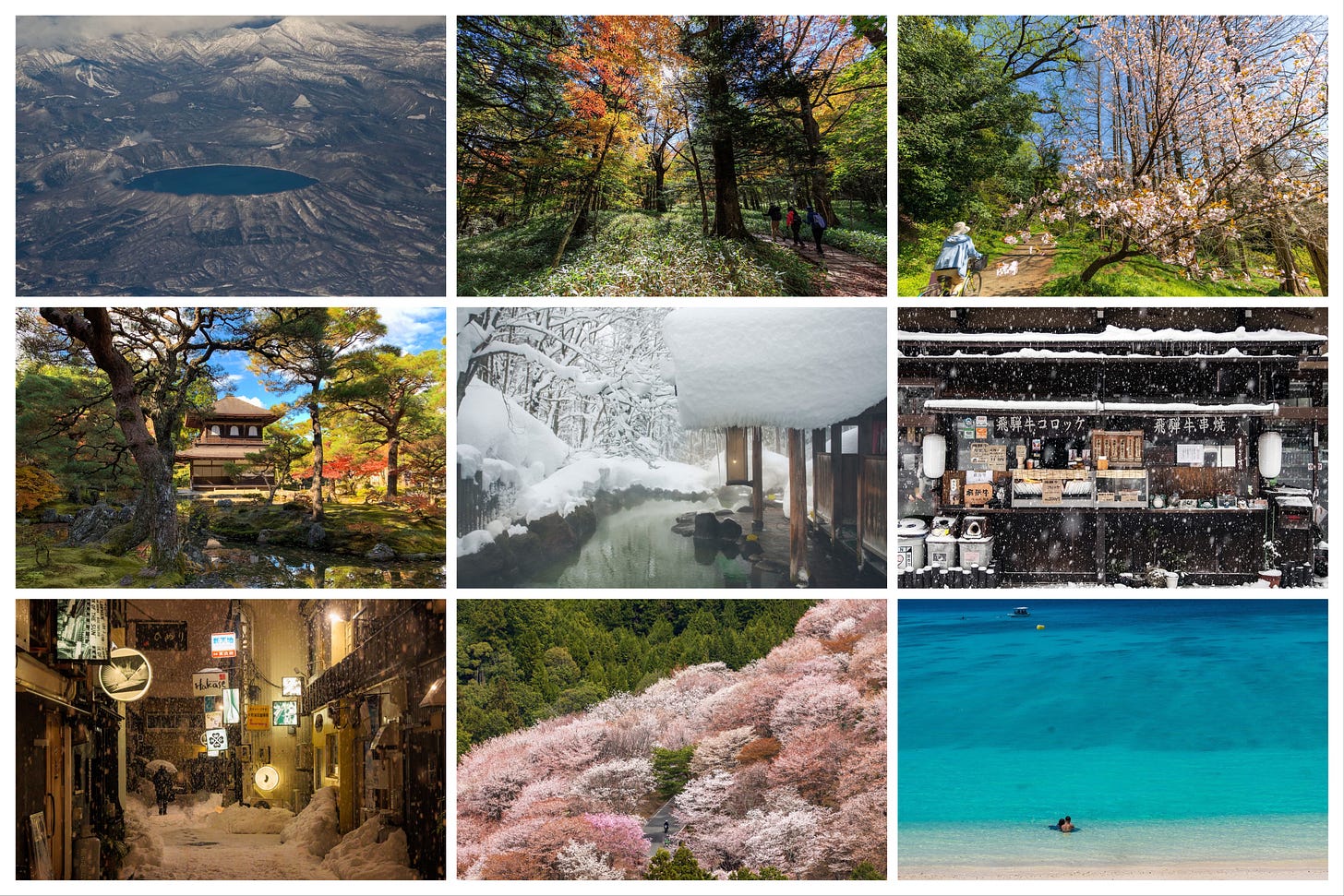
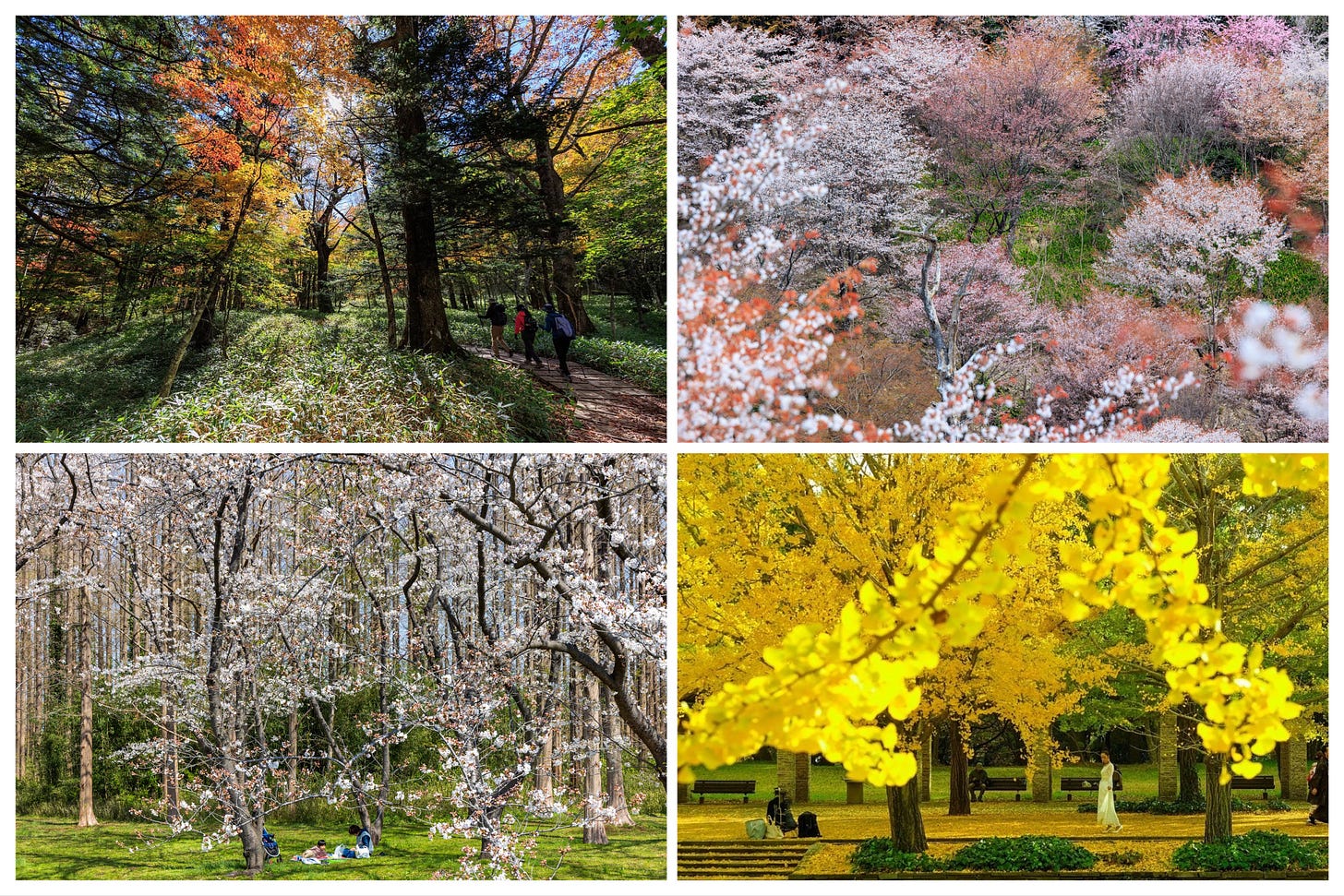
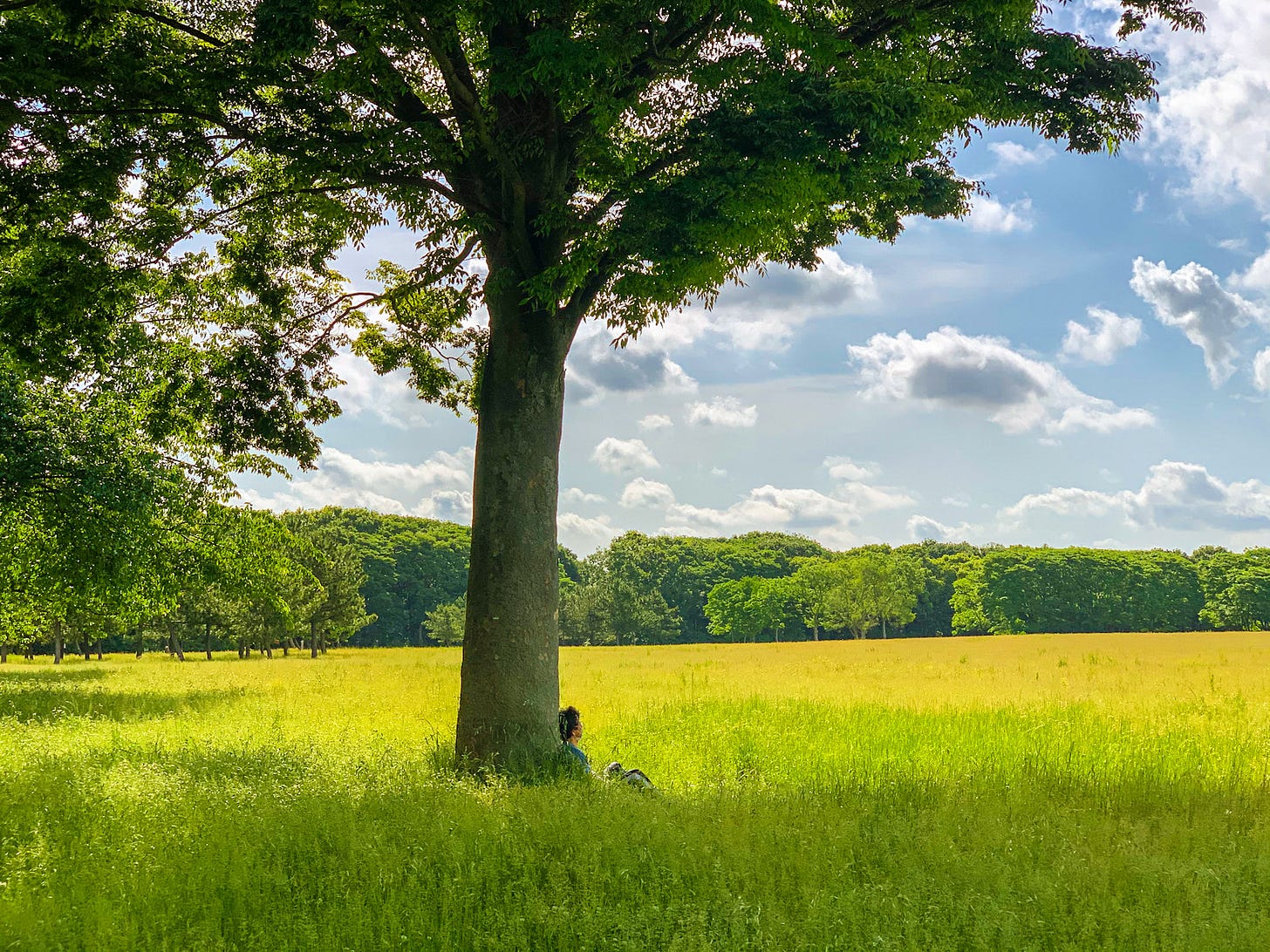
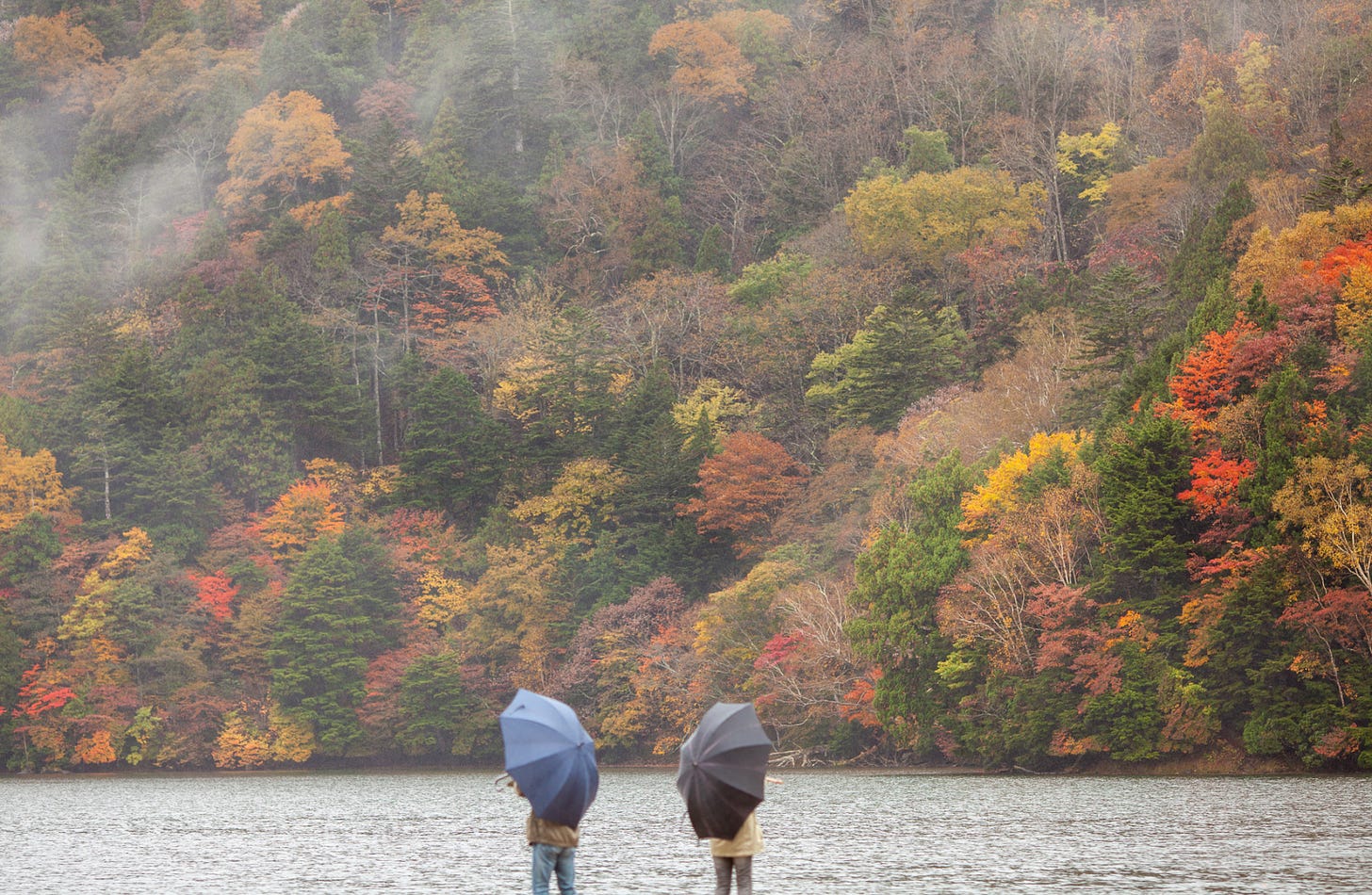
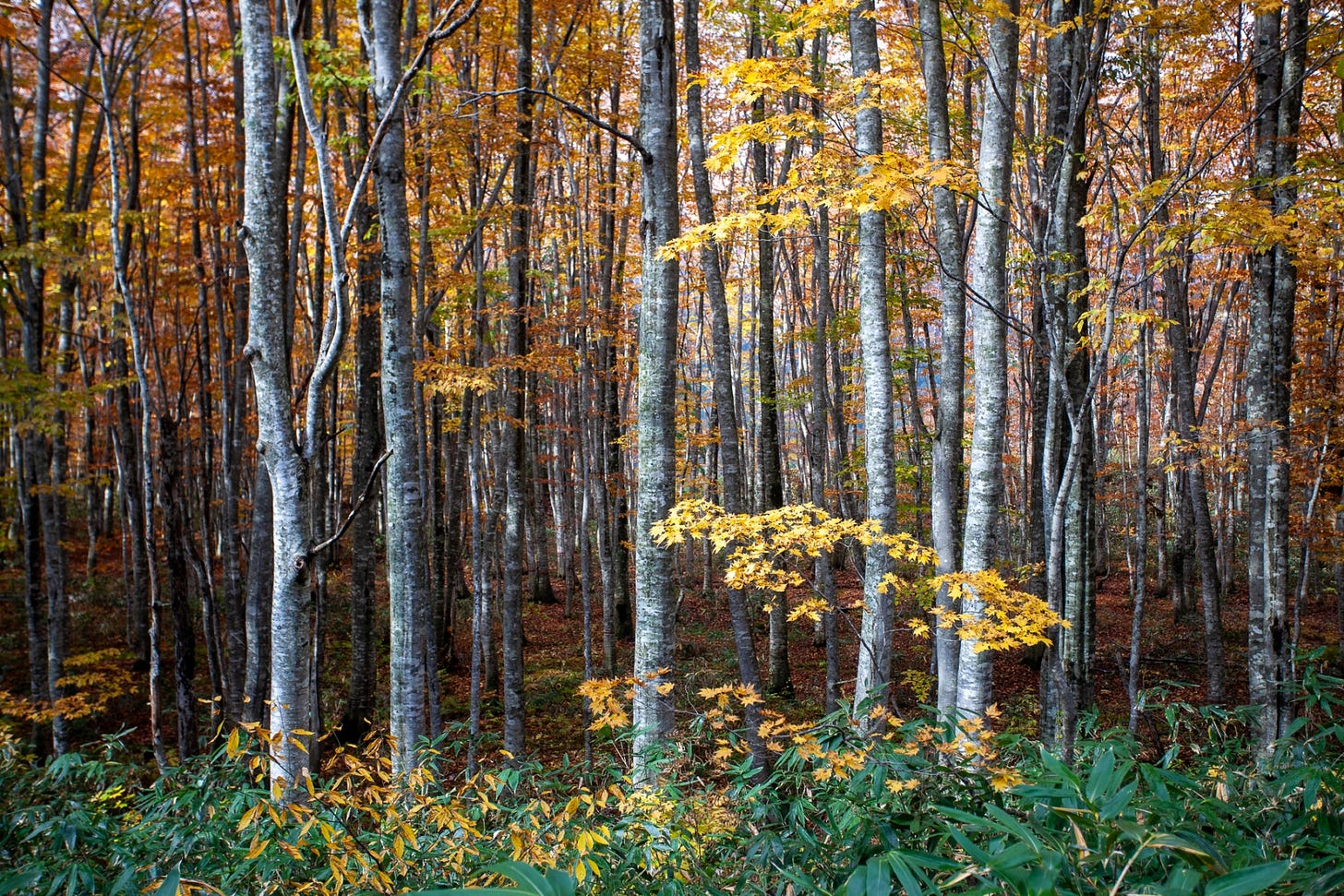
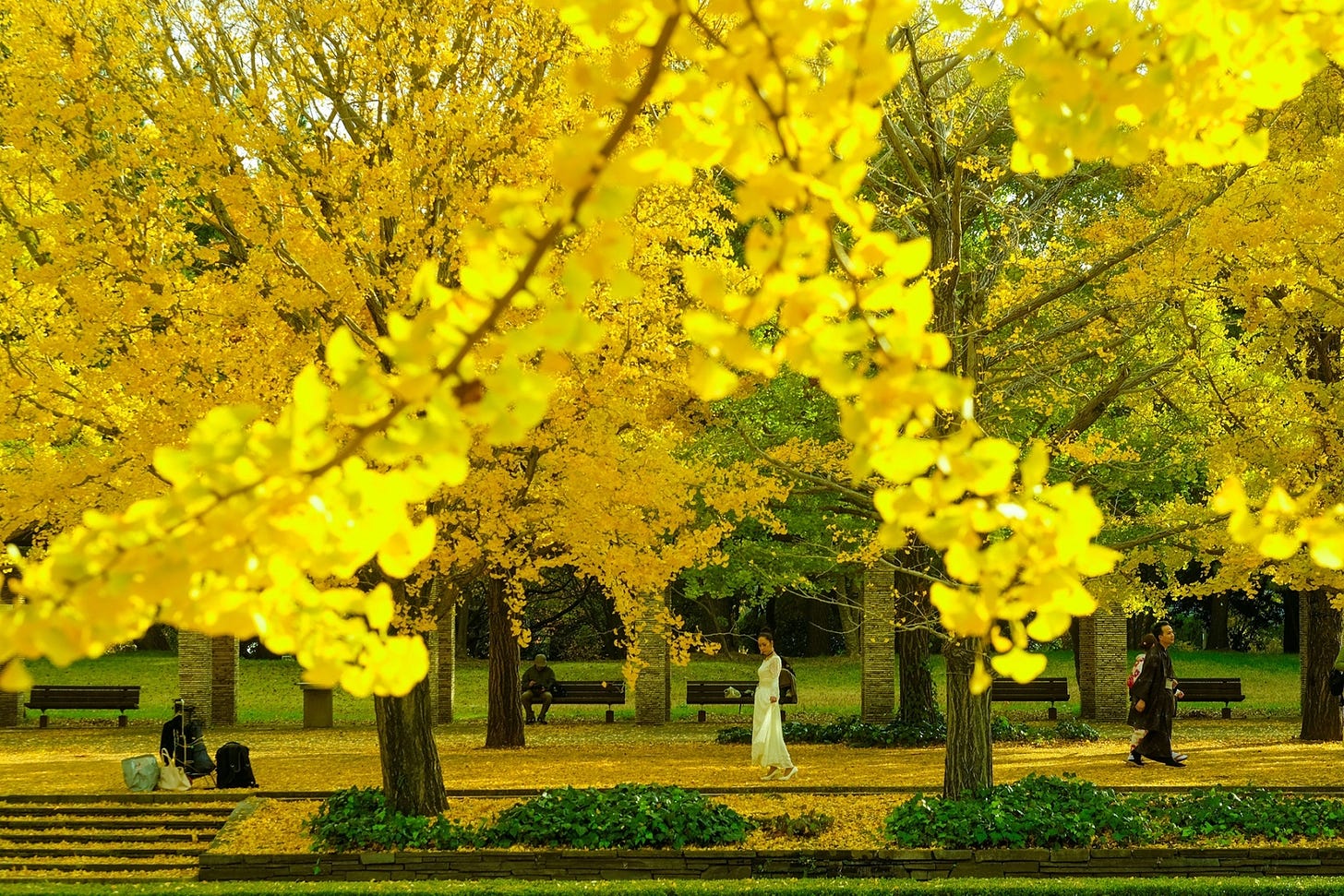
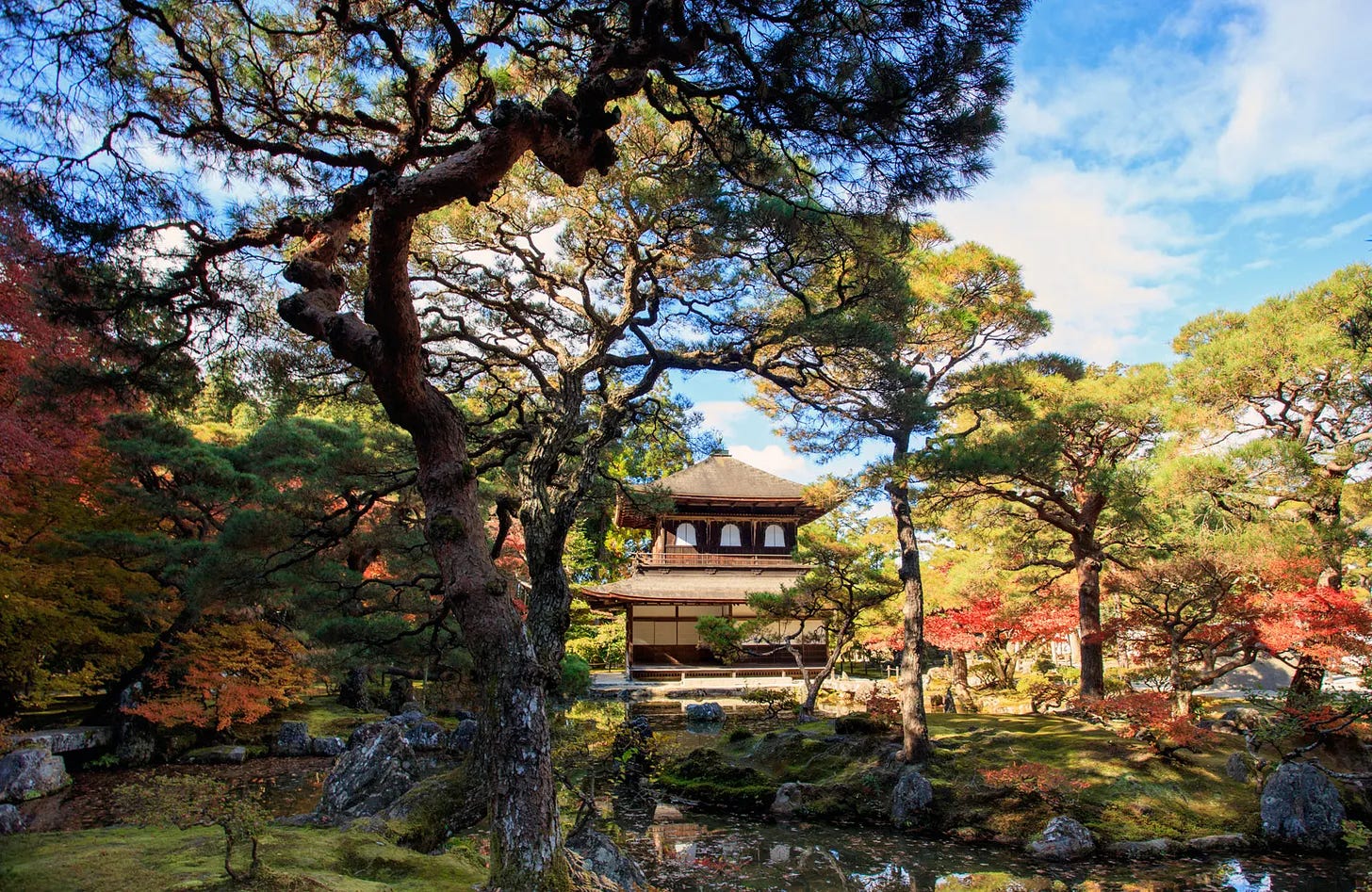
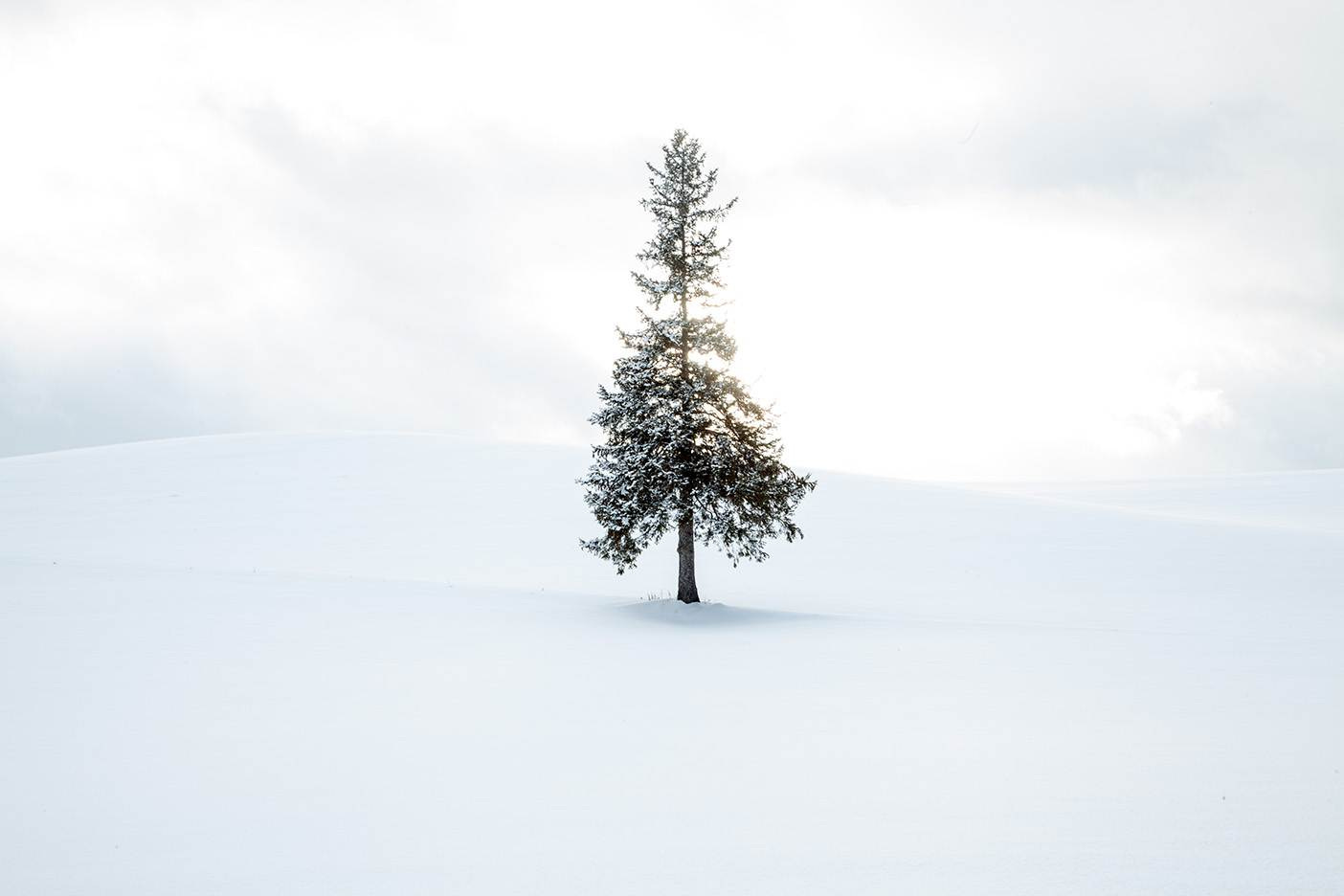
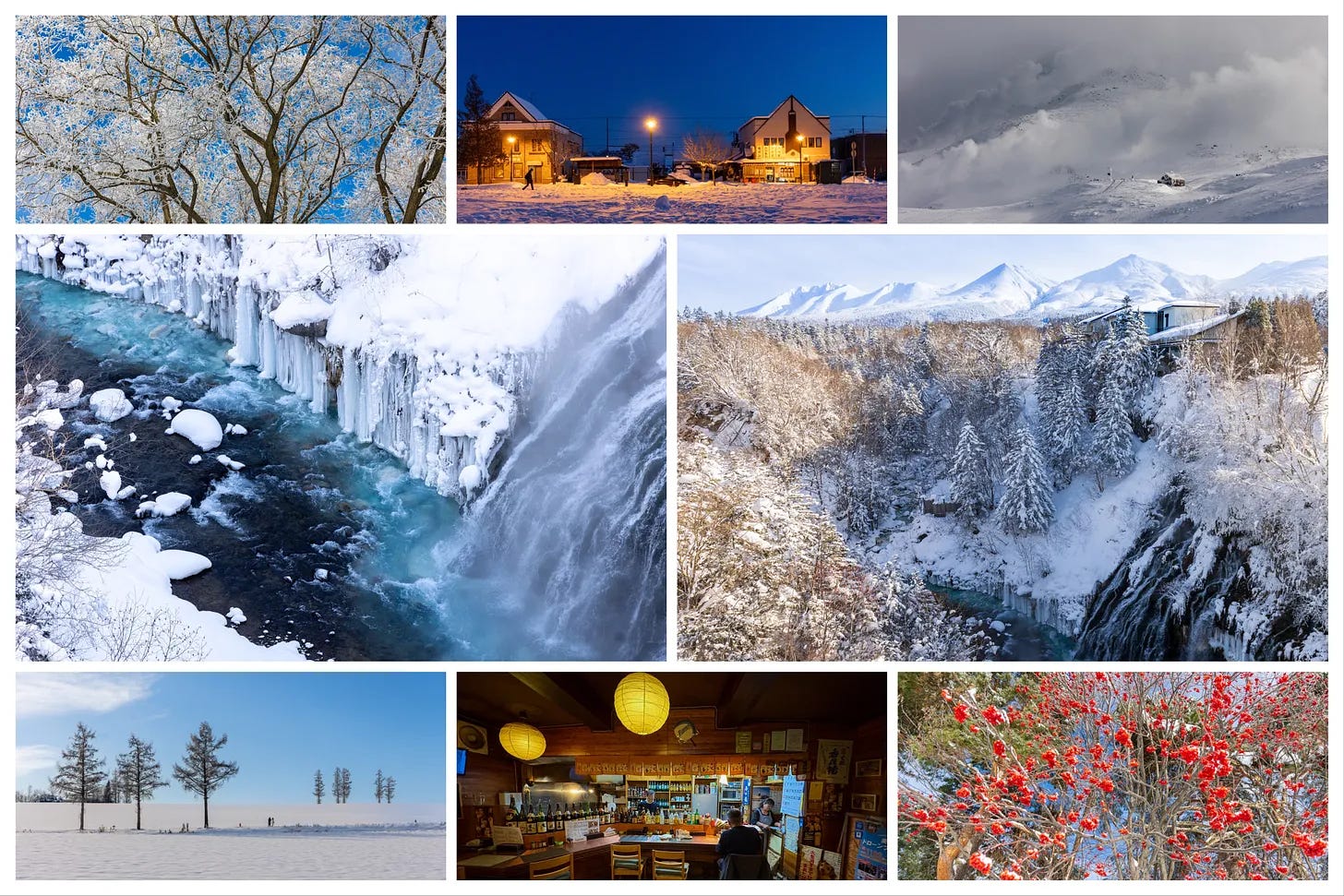
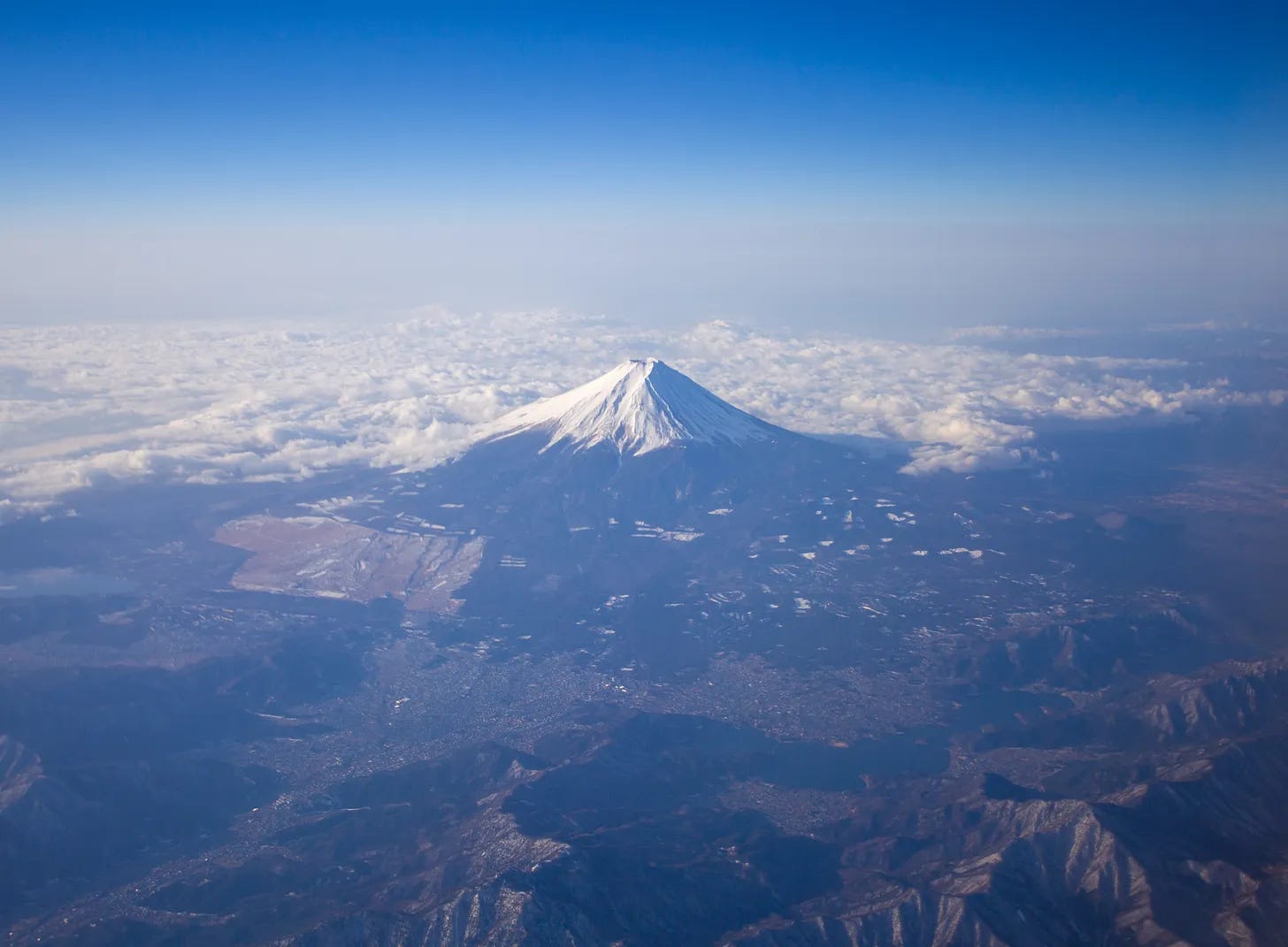
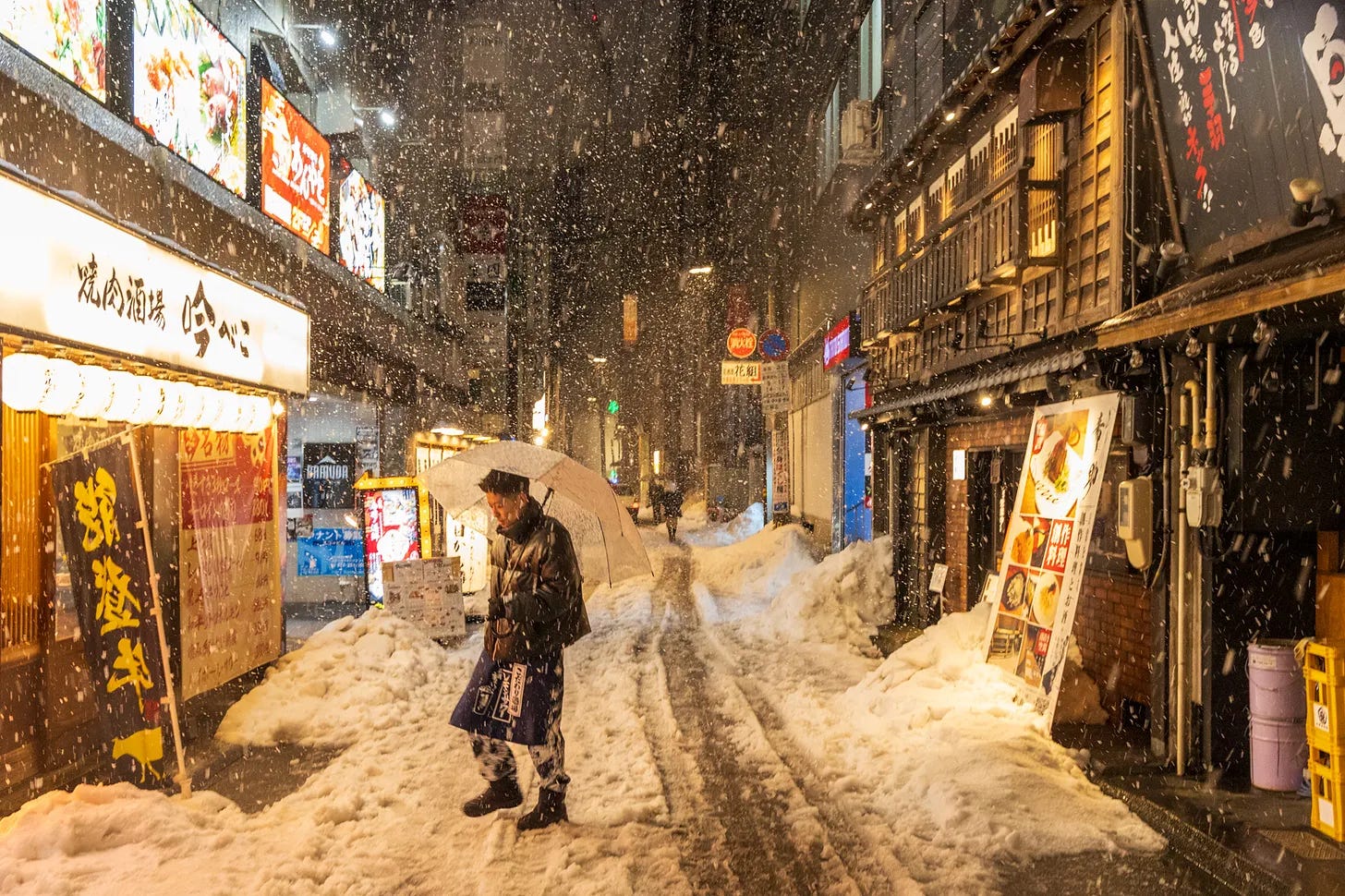
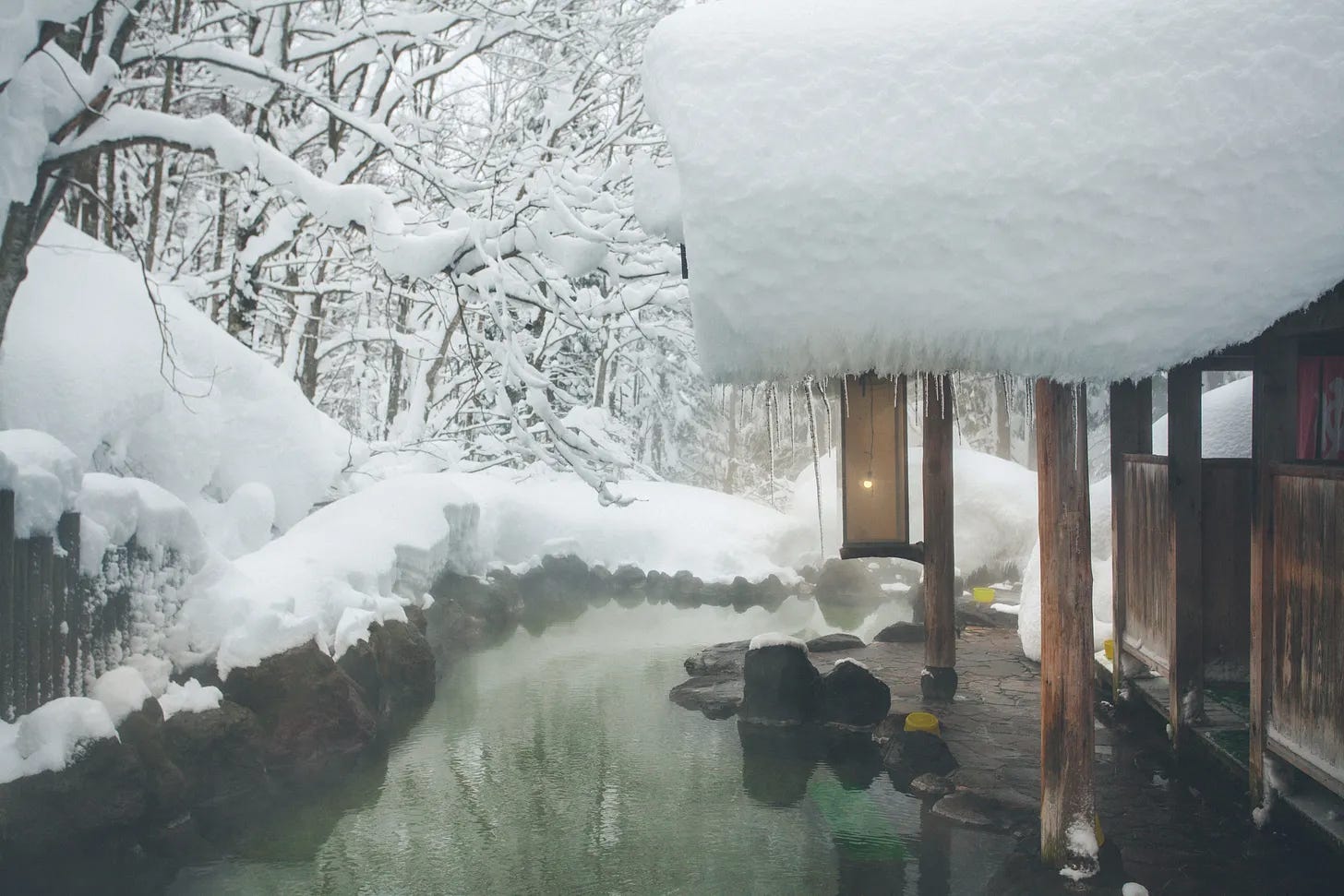
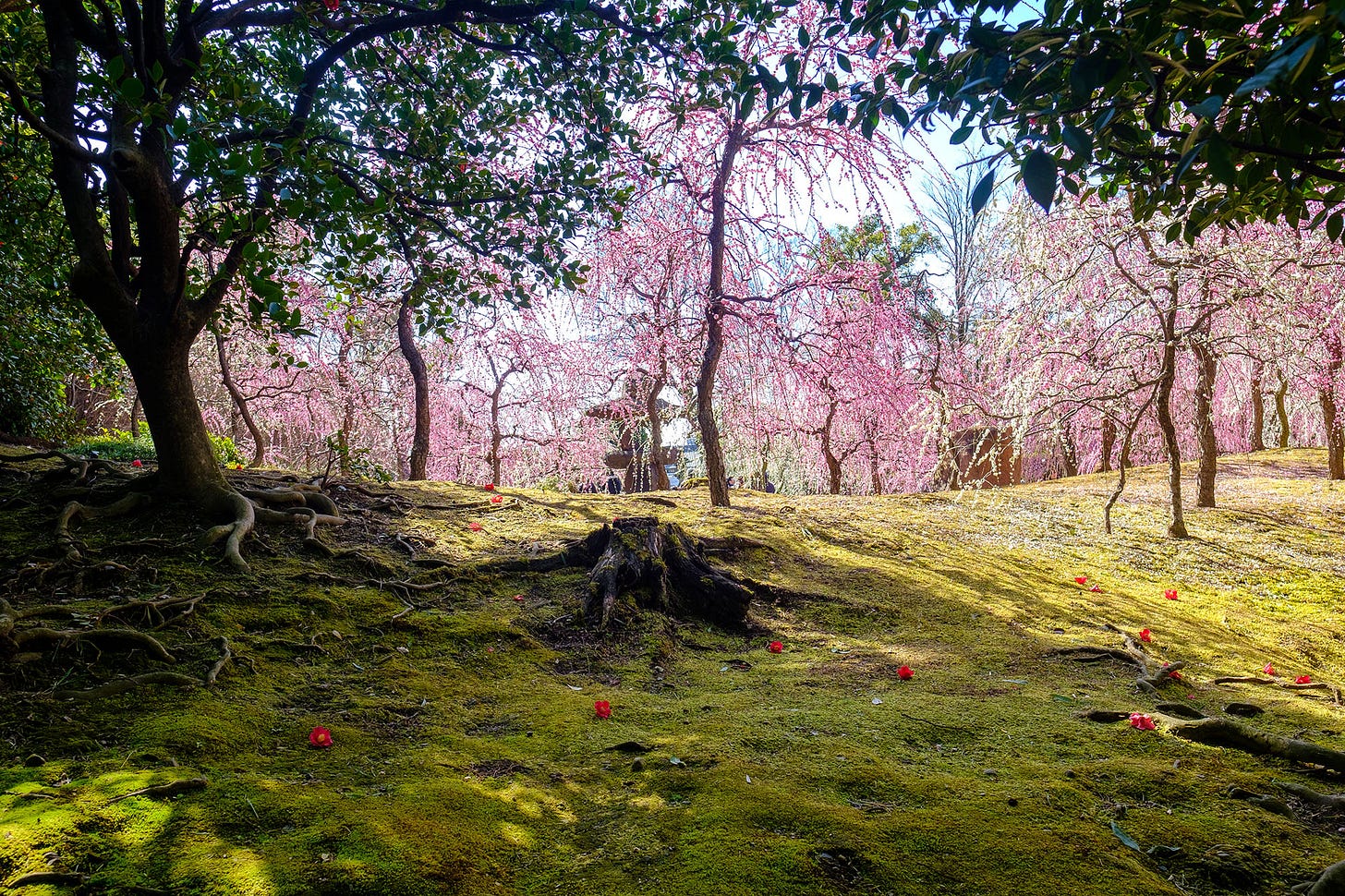
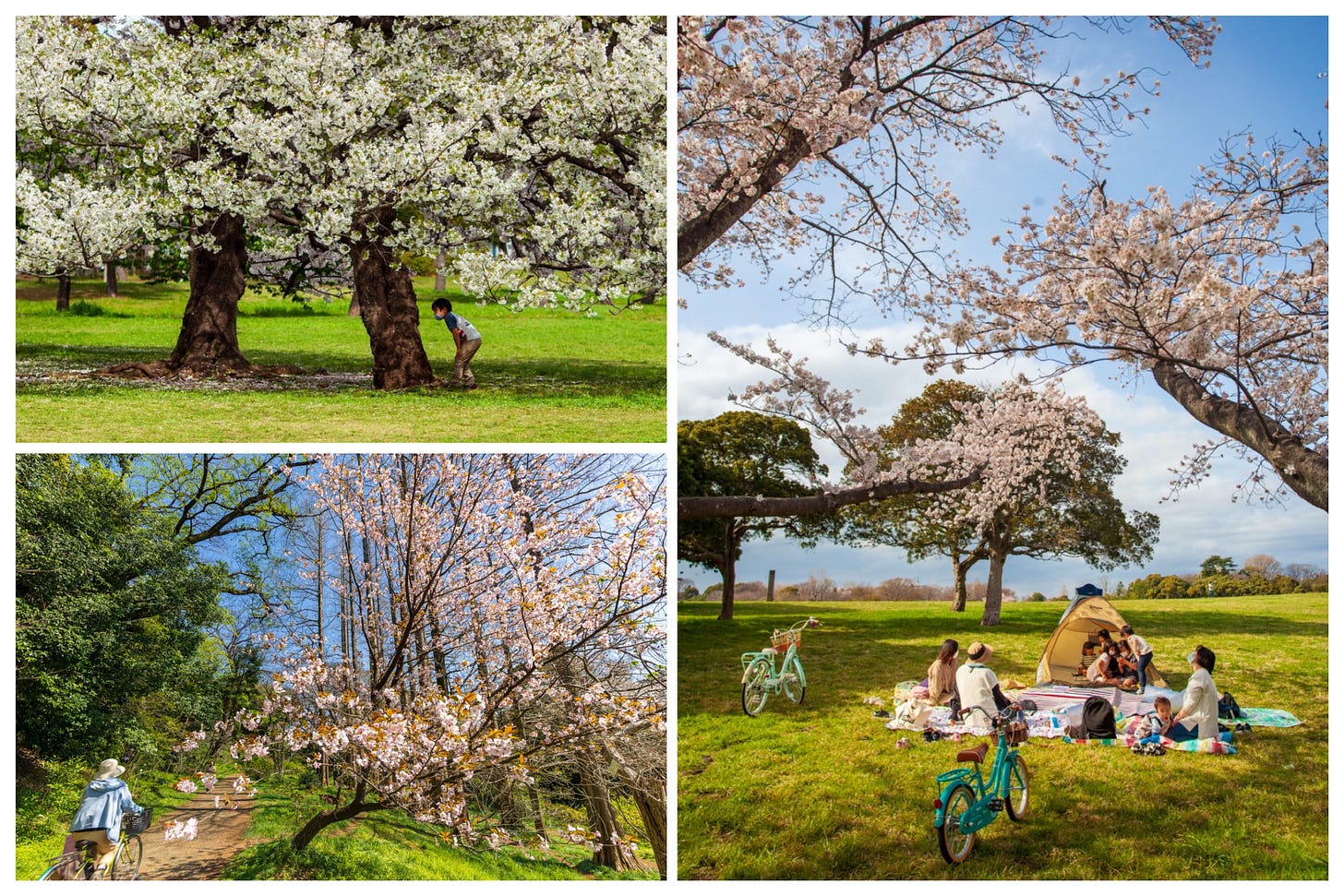
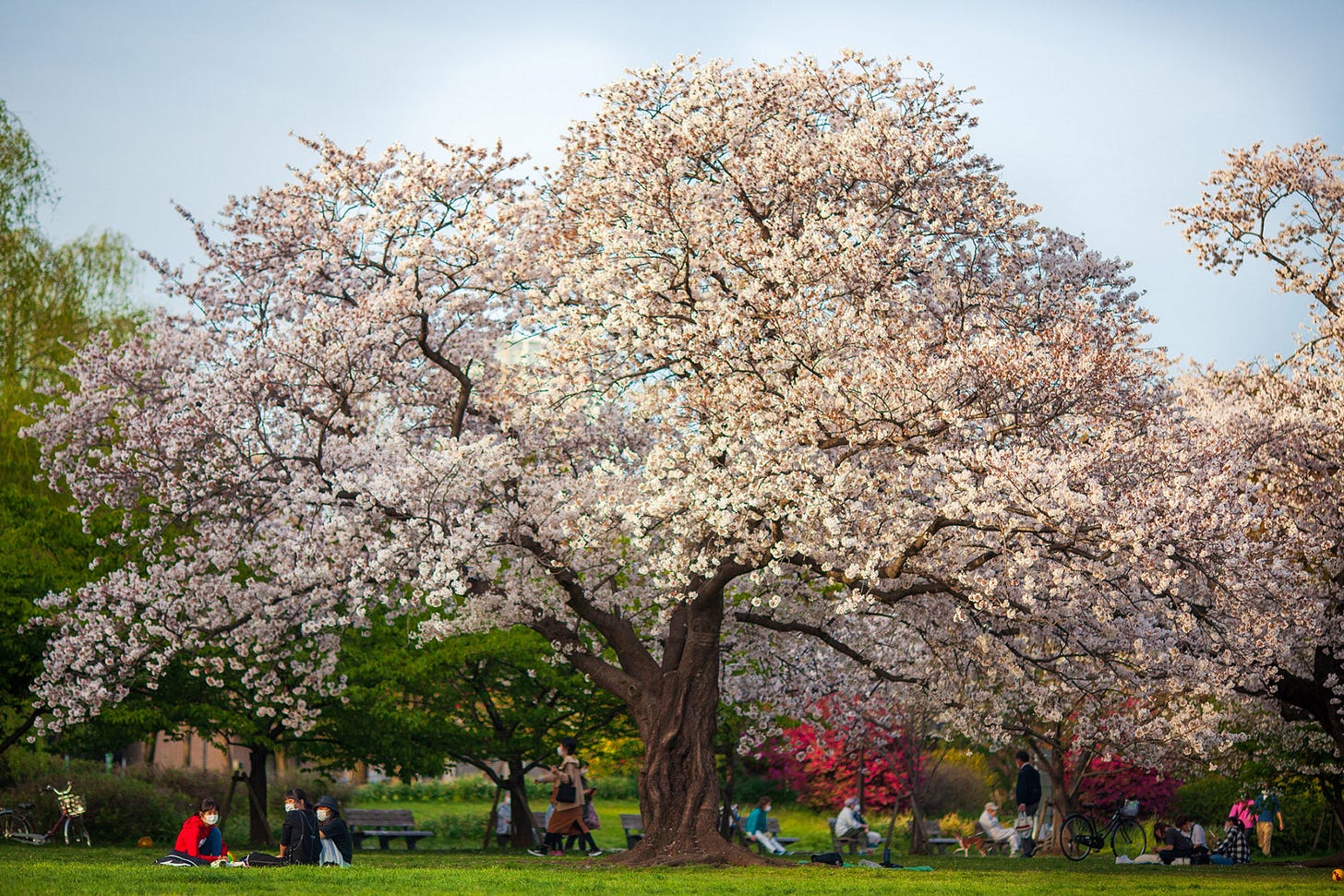
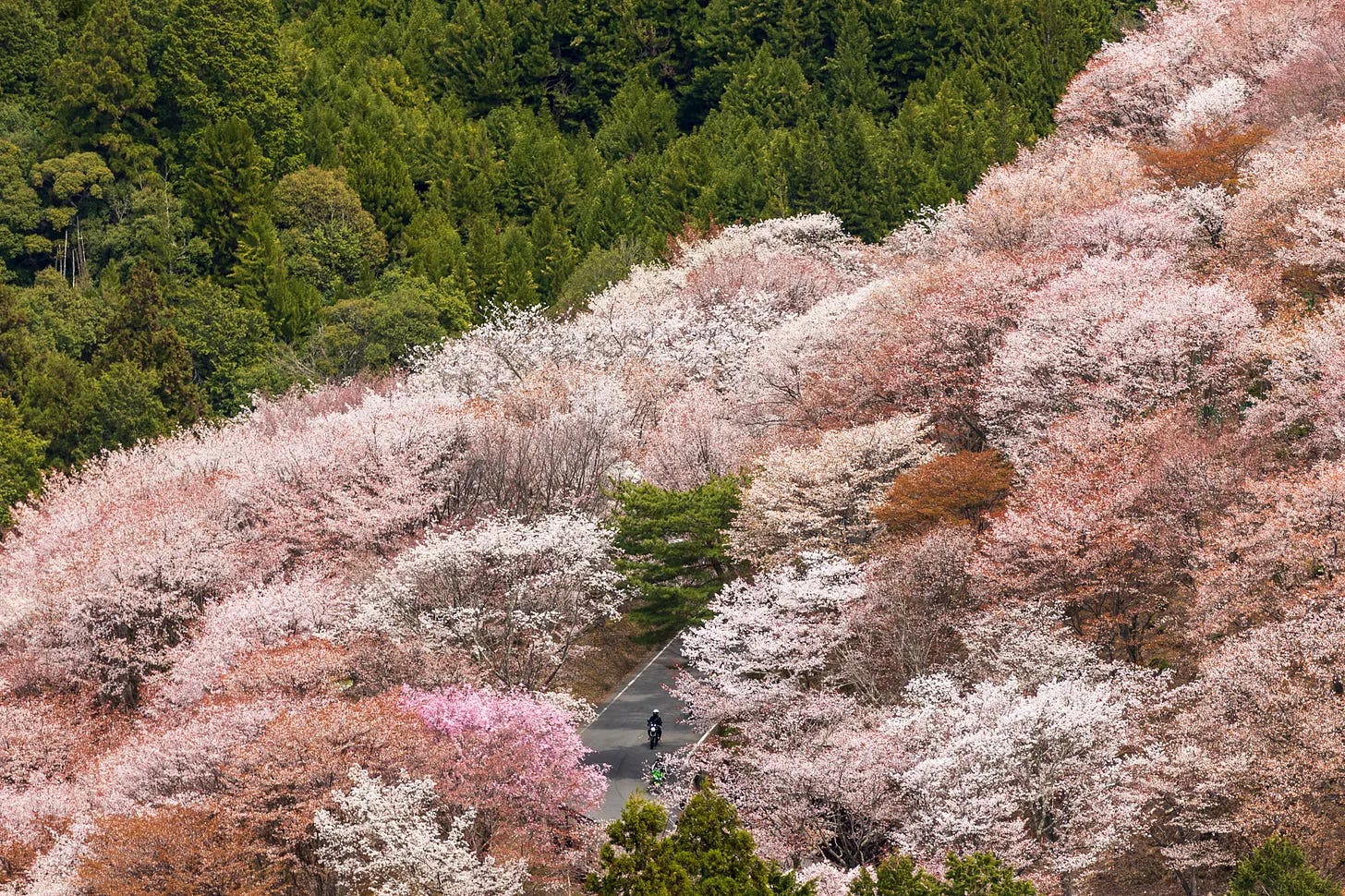
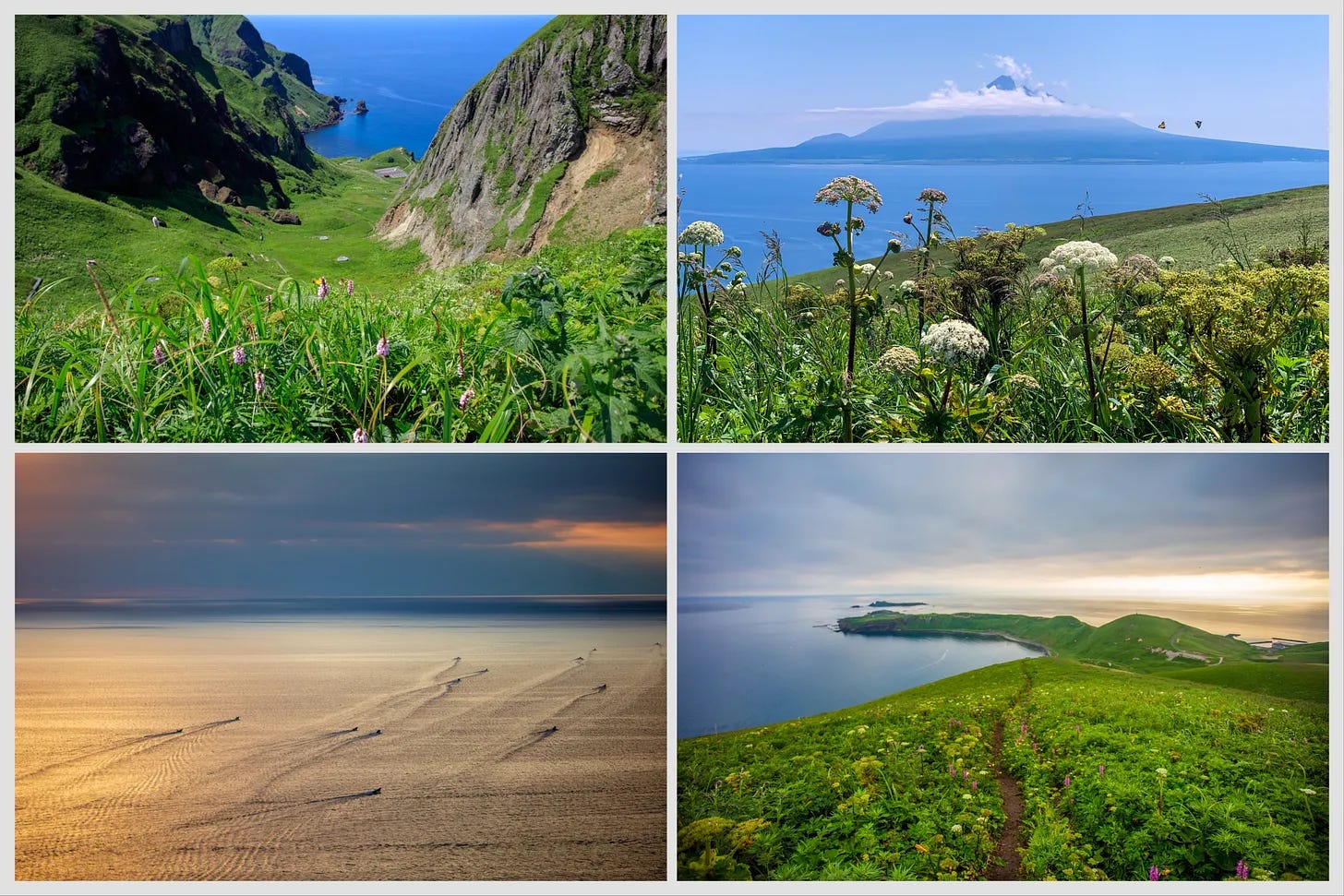
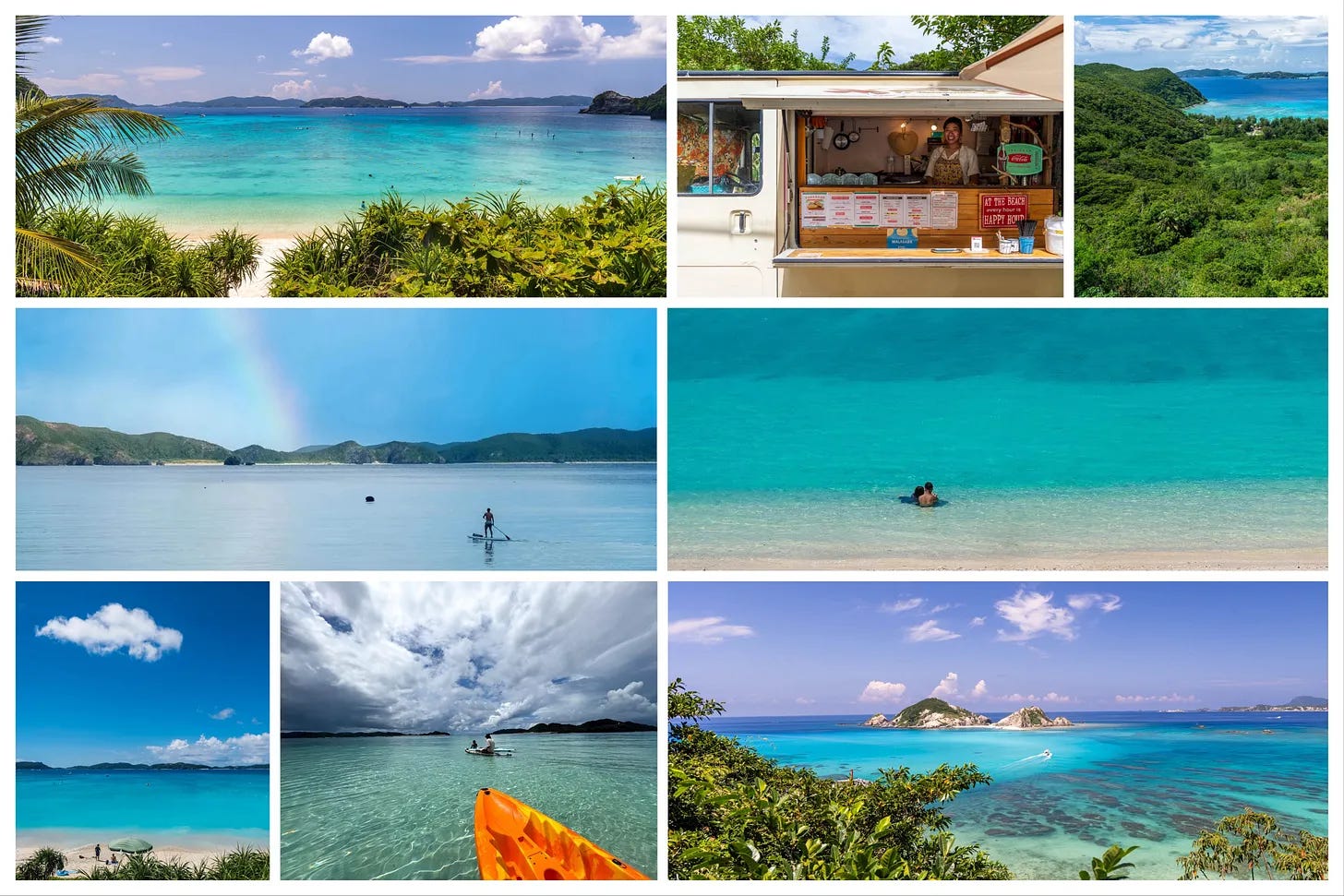
Beautiful photos!
And yeah, summer does suck… hehe. I’ve done a lot of my own photography over the summers until now… but I think summer is when I’m going to start taking breaks going forward 😬
Thank you for all the beautiful photos.
Foreigners seem to think Christmas in Japan is all about KFC, but roast chicken and fried chicken are sold everywhere, not just at KFC. KFC is just one of those places.